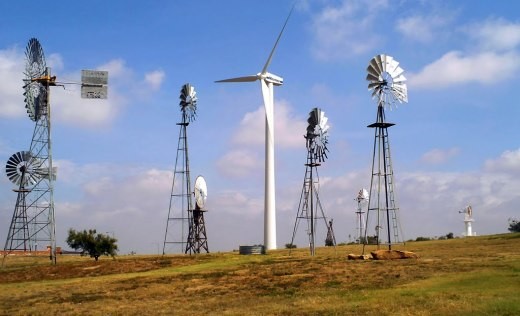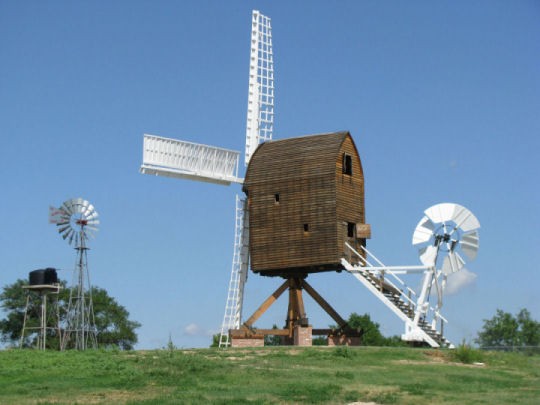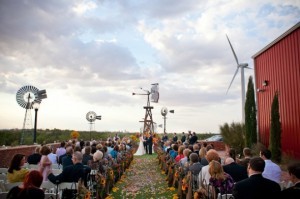American Wind Power Center and Museum
Introduction
Text-to-speech Audio
Images
Windmills on the Museum Grounds

The Flowerdew Hundred Postmill

Rustic Wedding at the American Wind Power Center and Museum

Backstory and Context
Text-to-speech Audio
Establishment of the American Wind Power Center and Museum
The history of the American Wind Power Center and Museum can be traced back to Billie Wolfe, a faculty member of Texas Tech’s College of Home Economics. In the mid-1960s, Wolfe discovered that historical windmills were rapidly disappearing. During the next 30 years, Wolfe traveled all over the United States searching for different windmills, interviewing farm and ranch owners, and securing and shipping windmills to Lubbock.
In 1993, Wolfe and Coy F. Harris, a Lubbock native and CEO of Wind Engineering Corporation, established the National Windmill Project as a non-profit organization. Just 4 years later, the City of Lubbock offered a permanent stretch of land south of MacKenzie Park, and by 1998, a formal opening was held for the American Wind Power Center. Since then, this center and museum has received international recognition for the work that Billie Wolfe started way back in the 1960s.1
Features of the Museum
Visitors coming to the American Wind Power Center and Museum will undoubtedly notice the Vestas V47 wind turbine, which dominates the windmill grounds. Standing at over 50 meters tall, this windmill turns about 660 kW of power, which is enough to fully power the museum. In fact, excess power that this windmill produces is sold to the local power grid.
The other highly popular windmill is the Flowerdew Hundred Postmill, a highly accurate recreation of the first windmill ever constructed in North America in 1621. The original windmill was located in Virginia on Sir George Yeardley’s plantation and was destroyed in a storm, and the recreated windmill at the American Wind Power Center has incorporated features that illustrate English windmill technology in the 18th century, and it is one of the few working Post-Mills in the Western Hemisphere.3
A side room of the center also features the world's largest windmill mural. This mural stands at over 34 feet high and 172 feet long, and it includes a 15-minute recording that details the history and development of this mural. The mural, produced by artist LaGina Fairbetter, depicts the history, present, and future of the windmill.
Another important sight to see at this museum is the last remaining “twin-wheel” windmill, which was a model infamous for killing more workers that other types of windmills.4
